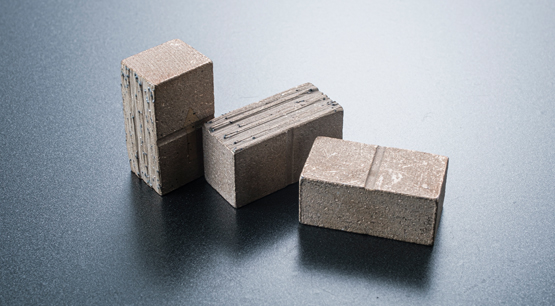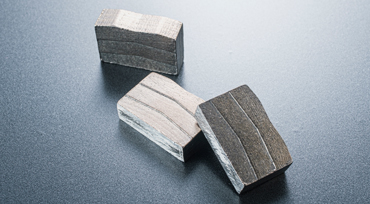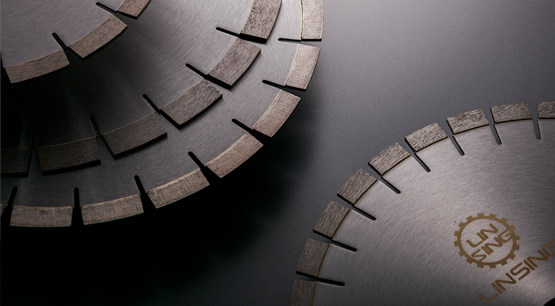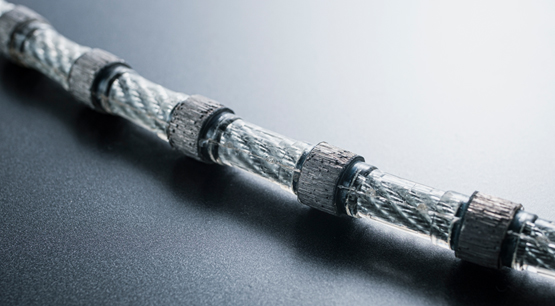During the use of the diamond segment, the diamond part of the diamond segment is used for high-speed friction with the stone. During this friction process, the harder diamond edge and the stone grind each other, so the process of cutting stone is also called cutting. In the process of stone cutting and grinding, the part of the stone that is consumed becomes the cutting path of the diamond segment. The diamond will also undergo various changes during the grinding process, and these changes determine whether the diamond segment will become blunt:
1: The diamond is broken normally. When the diamond segment is grinding the stone continuously, the diamond in the diamond segment is constantly broken during the cutting, and the broken diamond will continue to cut the stone because it has a new cutting edge. The diamond in such a diamond segment is in a normal consumption state, and there is generally no problem with such a diamond segment.
2: The diamond is broken abnormally. In the process of cutting stone, the diamond may be broken due to the poor strength of the diamond. During the cutting process, the diamond will be broken before it is consumed much due to the impact force, which will lead to insufficient cutting of the diamond. In this case, there will be obvious bluntness of the diamond segment.
The reason for this situation is mainly due to the mismatch between the strength of the diamond and the hardness of the stone. The direction to be improved is to use this kind of diaond segment to cut the stone with softer hardness as much as possible. It can be solved by using diamond with higher strength.
3: Diamond is not broken. In the process of cutting stone, the diamond will not be broken, and the diamond will be rounded continuously. When a large number of diamond edges used for cutting are rounded, the diamond cutting segment will also appear blunted the situation.
The main reason for this situation is that the strength of the diamond is too high, and the solution to the problem is also very simple. It is better to use this type of diamond segment to cut some hard stone materials, or use weaker diamonds during the production process to facilitate its sharpening.
In addition to diamond issues that can affect the dullness of the diamond segment, the metal bond used as a fixing material will also affect the sharpness of the diamond segment.
1: The wear resistance of the metal bond is too high. The diamond segment is composed of diamond and metal bond, diamond is used for cutting, and metal bond is used to fix the diamond. Under normal circumstances, during the process of cutting stone, diamond and metal bond are normally consumed, but If the wear resistance of the bonding agent is too high, the consumption of the bonding agent will be reduced during the cutting process. When the consumption of the bonding agent is less than that of the diamond, the cutting surface of the diamond segment will be ground flat. In this case, the damond segment will become blunt.
2: The density of the metal bond is too high. In addition to wear resistance, the density of the carcass will also make the diaond segment dull. If the density is too high, during the cutting process of the diamond segment, the part with higher density has less diamond content. While the sintered body of metal powder is mostly, but because the diamond does not have the cutting effect, the diamond segment will become blunt. The solution is mainly to adjust the sintering temperature, pressure, sintering time and other parameters according to the needs, or adjust the metal formula to make the metal bond of the diamond segment more reasonable.
Other aspects of the dullness of the diamond segment include mechanical factors (mechanical aging, insufficient power, resulting in insufficient speed, slow cutting of stones, resulting in dullness of the diamond segment), unreasonable human operation (excessive cutting speed can also cause the blunt segment), insufficient rigidity of the saw blade base, failure to relieve the stress of the saw blade (the rigidity and material of the saw blade base will affect the normal operation of the diamond segment, improper operation will cause the diamond segment to become blunt) and other reasons. But under normal circumstances, the core reason is that the diamond segment does not match the cutting stone.

Reasons and solutions for diamond segment to become blunt
Publish date:2023-01-12 15:06:43 Article From:LINSING diamond tools Clicks:










